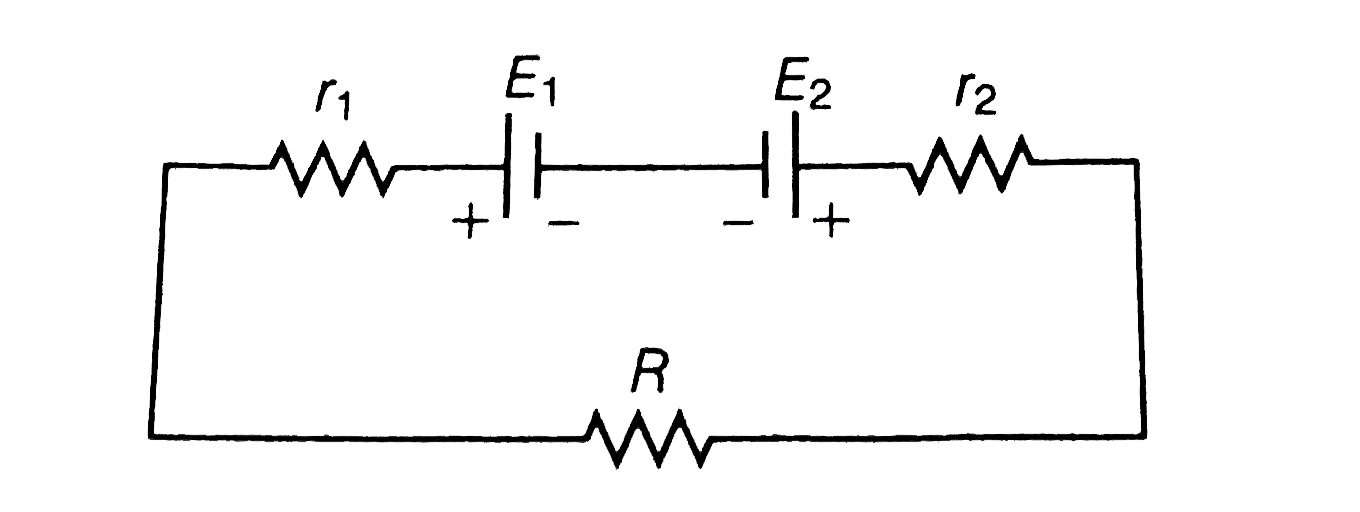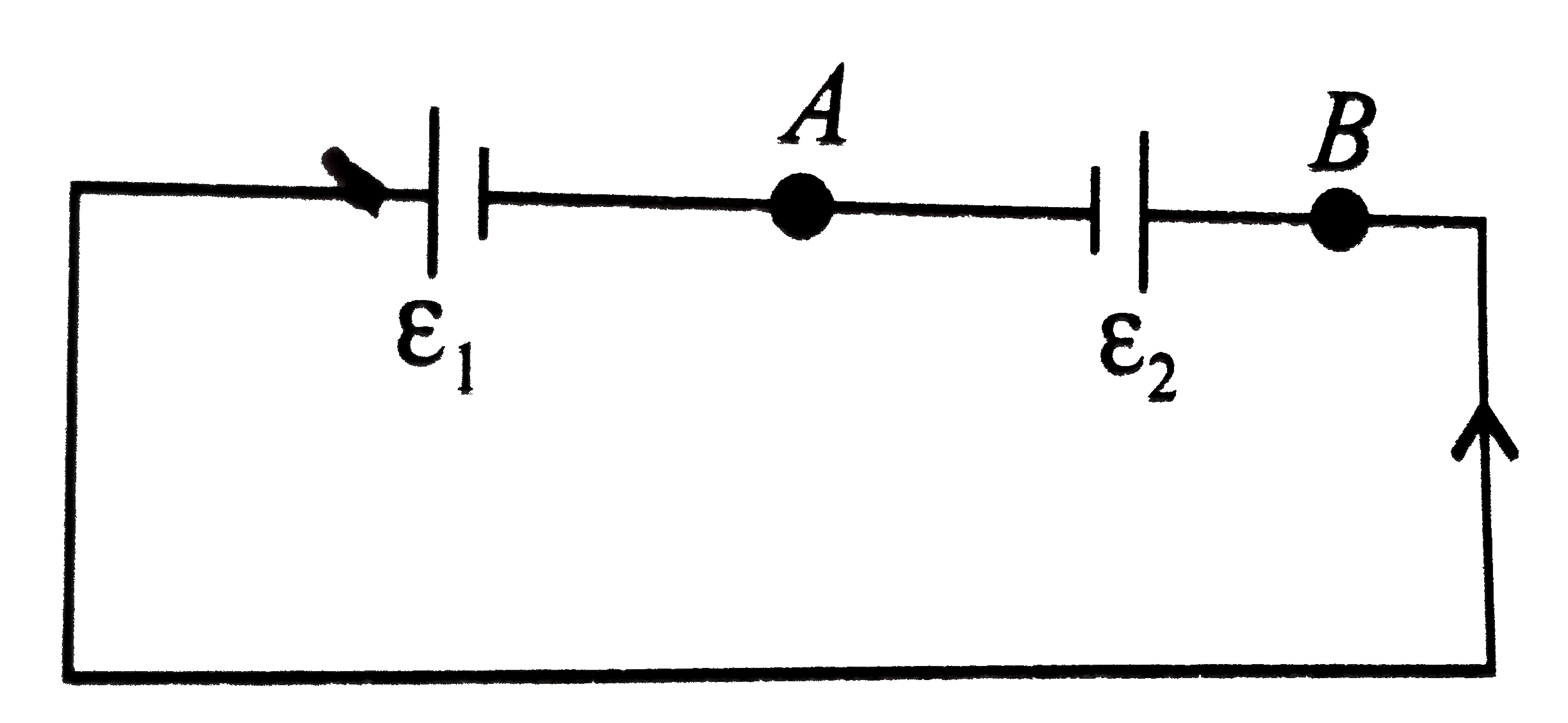Two cells of emf E1 and E2 are joined in opposition (such that E1>E2) . If r1 be the internal resistances and R be the external resistance, then the terminal potential difference is

E1−E2r1+r2×R
E1+E2r1+r2×R
E1−E2r1+r2+R×R
E1+E2r1+r2+R×R
The correct Answer is:C
Given, two cells of emf E1 and E2 are joined in opposition such that, E1>E2.

Current, l=E1−E2r1+r2+R
Now, terminal potential difference across a circuit,
V=lR=(E1−E2r1+r2+R)R
Topper's Solved these Questions
- CURRENT ELECTRICITYBOOK - MHTCET PREVIOUS YEAR PAPERS AND PRACTICE PAPERSCHAPTER - CURRENT ELECTRICITYEXERCISE - EXERCISE 2
26 Videos
- CURRENT ELECTRICITYBOOK - MHTCET PREVIOUS YEAR PAPERS AND PRACTICE PAPERSCHAPTER - CURRENT ELECTRICITYEXERCISE - MHT CET CORNER
32 Videos
- CURRENT ELECTRICITYBOOK - MHTCET PREVIOUS YEAR PAPERS AND PRACTICE PAPERSCHAPTER - CURRENT ELECTRICITYEXERCISE - MHT CET CORNER
32 Videos
- COMMUNICATION SYSTEMBOOK - MHTCET PREVIOUS YEAR PAPERS AND PRACTICE PAPERSCHAPTER - COMMUNICATION SYSTEMEXERCISE - MHC CET Corner
6 Videos
- ELASTICITY BOOK - MHTCET PREVIOUS YEAR PAPERS AND PRACTICE PAPERSCHAPTER - ELASTICITY EXERCISE - MHT CET CORNER
16 Videos
Similar Questions
A cell of emf ε and internal resistance (r) is connected in series with an external resistance (nr) then the ratio of the terminal potential difference to emf is:
View SolutionA cell of emf E and internal resistance r is connected in series with an external resistance nr. Than what will be the ratio of the terminal potential difference to emf, if n=9.
View Solution
Knowledge Check
If E is the emf of a cell of internal resistance r and external resistance R, then potential difference across R is given as
AV=E/(R+r)BV=ECV=E/(1+r/R)DV=E/(1+R/r)A cell of e.mf. E and internal resistance r is connected in series with an external resistance nr. Then, the ratio of the terminal potential difference to E.M.F.is
A(1n)B1(n+1)Cn(n+1)D(n+1)nA cell of e.mf. E and internal resistance r is connected in series with an external resistance nr. Then, the ratio of the terminal potential difference to E.M.F.is
A1/nB1n+1Cnn=1Dn+1n
The circuit in Fig. shows two cells connected in opposition to each other. Cell E1 is of emf 6V and internal resistance 2Ω, the cell E2 is of emf 4V sand internal resistance 8ω. Find the potential difference between the points A and B.

View SolutionA cell of emf (E) and internal resistance r is connected across a variable external resistance . R. The graph of terminal potential difference V as a function of R is
View SolutionTwo cells e1ande2 connected in opposition to each other as shown in figure. The cell of emf 9 V and internal resistance 3Ω the cell is of emf 7V and internal resistance 7Ω. The potential difference between the points A and B is

View SolutionA capacitor is conneted to a cell emf E having some internal resistance r. The potential difference across the
View SolutionA cell of e.m.f (E) and internal resistance (r) is connected in series with an external resistance (nr.) then the ratio of the terminal p.d. to E.M.F is
View Solution
